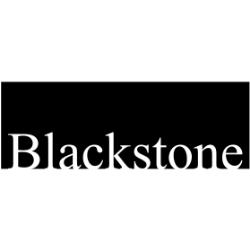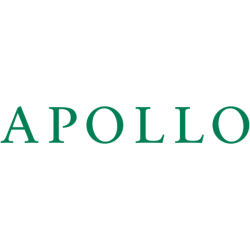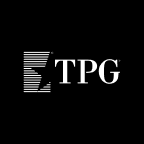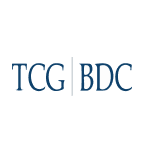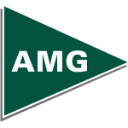KKR
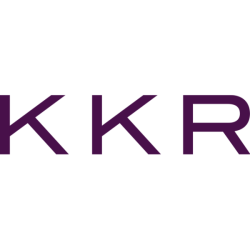
KKR & Co. Inc.
KKR
(2.5)152,62 USD
1.14% ROA
13.29% ROE
30.04x PER
116.565.244.000,00 USD
230.21% DER
0.52% Yield
13.08% NPM
KKR & Co. Inc. Stock Analysis
KKR & Co. Inc. Fundamental Analysis
Fundamental analysis in stock investing is like studying the foundation of a house before buying it. It involves looking at a company's financial health, like its earnings, assets, and debts, to determine if it's a good investment based on its fundamental strength and potential for growth.
| # | Analysis | Rating |
|---|---|---|
| 1 |
Assets Growth
With continuous growth in revenue over the last five years, this company has proven to be a lucrative investment option, showcasing its strong financial performance. |
|
| 2 |
Dividend Growth
Investors can be encouraged by the company's strong dividend growth over the past five years, highlighting its ability to generate consistent returns and provide an attractive investment opportunity. |
|
| 3 |
Dividend
Shareholders can rely on the company's remarkable dividend history, consistently paying dividends for the past five years, demonstrating a steadfast dedication to rewarding investors. |
|
| 4 |
ROE
ROE in an average range (5.34%) suggests satisfactory profitability and decent utilization of shareholders' equity. |
|
| 5 |
ROA
The stock's ROA (0.35%) indicates that it's doing well in making money from the things it owns. This makes it a good option to invest and make consistent profits. |
|
| 6 |
PBV
The stock's PBV ratio (2.89x) reflects a fair valuation, making it an attractive option for investors seeking balanced opportunities. |
|
| 7 |
Buffet Intrinsic Value
The company's stock seems undervalued (87) by Warren Buffett's formula, indicating a promising investment opportunity as its intrinsic value exceeds the market price. |
|
| 8 |
DER
The company has a high debt to equity ratio (238%), which means it owes a lot of money compared to what it actually owns, making it financially risky. |
|
| 9 |
Revenue Growth
Company has experienced no growth in revenue over the past three years, suggesting limited profitability and making it a less desirable investment opportunity. |
|
| 10 |
Net Profit Growth
This company's net profit has remained stagnant over the past five years, indicating a lack of growth and making it a less favorable investment option. |
|
| 11 |
Graham Number
The Graham number calculation reveals that this company's stock price is potentially inflated, implying that it may not be a desirable investment option. |
KKR & Co. Inc. Technical Analysis
Technical analysis in stock investing is like reading the patterns on a weather map to predict future weather conditions. It involves studying past stock price movements and trading volumes to make predictions about where a stock's price might go next, without necessarily looking at the company's financial health.
| # | Analysis | Recommendation |
|---|---|---|
| 1 | Awesome Oscillator | Buy |
| 2 | MACD | Buy |
| 3 | RSI | Hold |
| 4 | Stoch RSI | Sell |
KKR & Co. Inc. Price Chart
Financial Statements
Financial statements are like report cards for companies. They show how much money a company makes (income statement), what it owns and owes (balance sheet), and where it spends its money (cash flow statement), helping stock investors understand if a company is healthy and worth investing in.
Income Statements
An income statement for a company is like a scoreboard for its profits and losses. It shows how much money the company made (revenue) and how much it spent to make that money (expenses), helping stock investors see if a company is making a profit or not.
Revenue in stock investing is the total amount of money a company earns from its sales, and it's a key factor that investors consider to assess a company's financial performance and growth potential.
| Year | Revenue | Growth |
|---|---|---|
| 2007 | 2.854.048.000 | |
| 2008 | -12.630.058.000 | 122.6% |
| 2009 | 8.085.079.000 | 256.21% |
| 2010 | 9.614.494.000 | 15.91% |
| 2011 | 2.179.736.000 | -341.09% |
| 2012 | 568.442.000 | -283.46% |
| 2013 | 762.546.000 | 25.45% |
| 2014 | 1.110.008.000 | 31.3% |
| 2015 | 1.043.768.000 | -6.35% |
| 2016 | 2.040.018.000 | 48.84% |
| 2017 | 3.557.280.000 | 42.65% |
| 2018 | 2.395.836.000 | -48.48% |
| 2019 | 4.220.900.000 | 43.24% |
| 2020 | 4.230.891.000 | 0.24% |
| 2021 | 16.105.827.000 | 73.73% |
| 2022 | 5.565.056.000 | -189.41% |
| 2023 | 13.092.560.000 | 57.49% |
| 2023 | 18.663.644.000 | 29.85% |
| 2024 | 17.101.383.996 | -9.14% |
Research and Development Expenses are the costs a company incurs to create and improve its products or services, which can be important for investors to evaluate a company's innovation and potential for future growth.
| Year | Research and Development Expenses | Growth |
|---|---|---|
| 2007 | 0 | |
| 2008 | 0 | 0% |
| 2009 | 0 | 0% |
| 2010 | 0 | 0% |
| 2011 | 0 | 0% |
| 2012 | 0 | 0% |
| 2013 | 0 | 0% |
| 2014 | 0 | 0% |
| 2015 | 0 | 0% |
| 2016 | 0 | 0% |
| 2017 | 0 | 0% |
| 2018 | 0 | 0% |
| 2019 | 0 | 0% |
| 2020 | 0 | 0% |
| 2021 | 0 | 0% |
| 2022 | 0 | 0% |
| 2023 | 0 | 0% |
| 2023 | 0 | 0% |
| 2024 | 0 | 0% |
General and Administrative Expenses are the costs a company incurs to run its day-to-day operations, such as office rent, salaries, and utilities, which investors consider to understand a company's overall efficiency and management effectiveness.
| Year | General and Administrative Expenses | Growth |
|---|---|---|
| 2007 | 420.842.000 | |
| 2008 | 387.958.000 | -8.48% |
| 2009 | 1.157.697.000 | 66.49% |
| 2010 | 1.722.971.000 | 32.81% |
| 2011 | 1.159.723.000 | -48.57% |
| 2012 | 317.934.000 | -264.77% |
| 2013 | 500.546.000 | 36.48% |
| 2014 | 932.215.000 | 46.31% |
| 2015 | 690.634.000 | -34.98% |
| 2016 | 631.661.000 | -9.34% |
| 2017 | 641.202.000 | 1.49% |
| 2018 | 715.114.000 | 10.34% |
| 2019 | 791.541.000 | 9.66% |
| 2020 | 780.642.000 | -1.4% |
| 2021 | 1.942.360.000 | 59.81% |
| 2022 | 2.352.381.000 | 17.43% |
| 2023 | 2.421.292.000 | 2.85% |
| 2023 | 2.629.112.000 | 7.9% |
| 2024 | 3.013.784.000 | 12.76% |
EBITDA stands for Earnings Before Interest, Taxes, Depreciation, and Amortization. It is a measure that helps stock investors analyze a company's profitability by looking at its earnings without considering certain expenses. This helps to get a clearer picture of the company's financial performance and its ability to generate cash flow.
| Year | EBITDA | Growth |
|---|---|---|
| 2007 | 2.503.933.000 | |
| 2008 | -12.922.885.000 | 119.38% |
| 2009 | 6.982.594.000 | 285.07% |
| 2010 | 7.904.930.000 | 11.67% |
| 2011 | 1.038.489.000 | -661.2% |
| 2012 | 8.140.813.000 | 87.24% |
| 2013 | 7.991.770.000 | -1.86% |
| 2014 | 5.775.881.000 | -38.36% |
| 2015 | 5.914.894.000 | 2.35% |
| 2016 | 1.765.178.000 | -235.09% |
| 2017 | 3.593.266.000 | 50.88% |
| 2018 | 3.132.877.000 | -14.7% |
| 2019 | 6.211.841.000 | 49.57% |
| 2020 | 6.696.566.000 | 7.24% |
| 2021 | 14.978.628.000 | 55.29% |
| 2022 | 1.345.738.000 | -1013.04% |
| 2023 | 7.512.020.000 | 82.09% |
| 2023 | 10.336.335.000 | 27.32% |
| 2024 | 2.930.848.000 | -252.67% |
Gross profit is the money a company makes from selling its products or services after subtracting the cost of producing or providing them, and it is an important measure for investors to understand a company's profitability.
| Year | Gross Profit | Growth |
|---|---|---|
| 2007 | 2.854.048.000 | |
| 2008 | -12.630.058.000 | 122.6% |
| 2009 | 8.085.079.000 | 256.21% |
| 2010 | 8.230.347.000 | 1.77% |
| 2011 | 1.256.705.000 | -554.91% |
| 2012 | -712.412.000 | 276.4% |
| 2013 | -504.046.000 | -41.34% |
| 2014 | -153.844.000 | -227.63% |
| 2015 | -136.823.000 | -12.44% |
| 2016 | 976.205.000 | 114.02% |
| 2017 | 1.861.790.000 | 47.57% |
| 2018 | 1.021.473.000 | -82.27% |
| 2019 | 2.104.010.000 | 51.45% |
| 2020 | 2.078.401.000 | -1.23% |
| 2021 | 6.895.582.000 | 69.86% |
| 2022 | 2.006.803.000 | -243.61% |
| 2023 | 6.501.280.000 | 69.13% |
| 2023 | 9.201.425.000 | 29.34% |
| 2024 | 6.575.723.996 | -39.93% |
Net income in stock investing is like the money a company actually gets to keep as profit after paying all its bills, and it's an important measure to understand how well a company is doing financially.
| Year | Net Profit | Growth |
|---|---|---|
| 2007 | 802.764.000 | |
| 2008 | -1.204.471.000 | 166.65% |
| 2009 | 849.685.000 | 241.76% |
| 2010 | 7.776.471.000 | 89.07% |
| 2011 | 1.921.000 | -404713.69% |
| 2012 | 560.836.000 | 99.66% |
| 2013 | 691.226.000 | 18.86% |
| 2014 | 477.611.000 | -44.73% |
| 2015 | 488.482.000 | 2.23% |
| 2016 | 309.307.000 | -57.93% |
| 2017 | 1.018.305.000 | 69.63% |
| 2018 | 1.131.063.000 | 9.97% |
| 2019 | 2.005.049.000 | 43.59% |
| 2020 | 2.002.509.000 | -0.13% |
| 2021 | 4.732.406.000 | 57.69% |
| 2022 | -521.664.000 | 1007.18% |
| 2023 | 5.960.504.000 | 108.75% |
| 2023 | 3.732.261.000 | -59.7% |
| 2024 | 2.671.704.000 | -39.7% |
EPS, or earnings per share, is a measure that shows how much profit a company has earned for each outstanding share of its stock, and it is important for stock investors as it helps understand the profitability of a company and compare it with other companies in the market.
| Year | Earning per Share (EPS) | Growth |
|---|---|---|
| 2007 | 4 | |
| 2008 | -6 | 160% |
| 2009 | 4 | 225% |
| 2010 | 2 | -300% |
| 2011 | 0 | 0% |
| 2012 | 2 | 100% |
| 2013 | 3 | 0% |
| 2014 | 1 | -100% |
| 2015 | 1 | 0% |
| 2016 | 1 | 0% |
| 2017 | 2 | 100% |
| 2018 | 2 | 0% |
| 2019 | 4 | 33.33% |
| 2020 | 3 | 0% |
| 2021 | 8 | 57.14% |
| 2022 | -1 | 0% |
| 2023 | 7 | 100% |
| 2023 | 4 | -50% |
| 2024 | 3 | -33.33% |
Cashflow Statements
Cashflow statements show the movement of money in and out of a company, helping stock investors understand how much money a company makes and spends. By examining cashflow statements, investors can assess if a company is generating enough cash to pay its bills, invest in growth, and provide returns to stockholders.
Free cash flow is the leftover cash that a company generates after covering its operating expenses and capital expenditures, which is important for stock investors as it shows how much money a company has available to invest in growth, pay dividends, or reduce debt.
| Year | Free Cashflow | Growth |
|---|---|---|
| 2007 | -8.539.564.000 | |
| 2008 | -2.459.260.000 | -247.24% |
| 2009 | -368.362.000 | -567.62% |
| 2010 | 720.315.000 | 151.14% |
| 2011 | -226.791.000 | 417.61% |
| 2012 | 6.164.785.000 | 103.68% |
| 2013 | 2.563.357.000 | -140.5% |
| 2014 | 1.242.710.000 | -106.27% |
| 2015 | 120.026.000 | -935.37% |
| 2016 | -1.626.967.000 | 107.38% |
| 2017 | -3.728.151.000 | 56.36% |
| 2018 | -7.711.702.000 | 51.66% |
| 2019 | -5.889.517.000 | -30.94% |
| 2020 | -6.107.079.000 | 3.56% |
| 2021 | -7.278.757.000 | 16.1% |
| 2022 | -5.364.315.000 | -35.69% |
| 2023 | 1.953.654.000 | 374.58% |
| 2023 | -1.602.205.000 | 221.94% |
| 2024 | 2.640.634.000 | 160.68% |
Operating cash flow represents the cash generated or consumed by a company's day-to-day operations, excluding external investing or financing activities, and is crucial for stock investors as it shows how much cash a company is generating from its core business operations.
| Year | Operating Cashflow | Growth |
|---|---|---|
| 2007 | -8.522.501.000 | |
| 2008 | -2.446.156.000 | -248.4% |
| 2009 | -347.312.000 | -604.31% |
| 2010 | 733.396.000 | 147.36% |
| 2011 | -208.577.000 | 451.62% |
| 2012 | 6.201.751.000 | 103.36% |
| 2013 | 2.577.753.000 | -140.59% |
| 2014 | 1.488.650.000 | -73.16% |
| 2015 | 385.404.000 | -286.26% |
| 2016 | -1.562.182.000 | 124.67% |
| 2017 | -3.630.029.000 | 56.97% |
| 2018 | -7.606.475.000 | 52.28% |
| 2019 | -5.682.155.000 | -33.87% |
| 2020 | -5.953.693.000 | 4.56% |
| 2021 | -7.176.708.000 | 17.04% |
| 2022 | -5.279.259.000 | -35.94% |
| 2023 | 1.971.073.000 | 367.84% |
| 2023 | -1.493.812.000 | 231.95% |
| 2024 | 2.667.107.000 | 156.01% |
Capex, short for capital expenditures, refers to the money a company spends on acquiring or upgrading tangible assets like buildings, equipment, or technology, which is important for stock investors as it indicates how much a company is investing in its infrastructure to support future growth and profitability.
| Year | Capital Expenditure | Growth |
|---|---|---|
| 2007 | 17.063.000 | |
| 2008 | 13.104.000 | -30.21% |
| 2009 | 21.050.000 | 37.75% |
| 2010 | 13.081.000 | -60.92% |
| 2011 | 18.214.000 | 28.18% |
| 2012 | 36.966.000 | 50.73% |
| 2013 | 14.396.000 | -156.78% |
| 2014 | 245.940.000 | 94.15% |
| 2015 | 265.378.000 | 7.32% |
| 2016 | 64.785.000 | -309.63% |
| 2017 | 98.122.000 | 33.98% |
| 2018 | 105.227.000 | 6.75% |
| 2019 | 207.362.000 | 49.25% |
| 2020 | 153.386.000 | -35.19% |
| 2021 | 102.049.000 | -50.31% |
| 2022 | 85.056.000 | -19.98% |
| 2023 | 17.419.000 | -388.29% |
| 2023 | 108.393.000 | 83.93% |
| 2024 | 26.473.000 | -309.45% |
Balance Sheet
Balance sheets provide a snapshot of a company's financial health and its assets (such as cash, inventory, and property) and liabilities (like debts and obligations) at a specific point in time. For stock investors, balance sheets help assess the company's overall worth and evaluate its ability to meet financial obligations and support future growth.
Equity refers to the ownership interest or stake that shareholders have in a company, representing their claim on its assets and earnings after all debts and liabilities are paid.
| Year | Equity | Growth |
|---|---|---|
| 2008 | 19.850.357.000 | |
| 2009 | 27.361.481.000 | 27.45% |
| 2010 | 36.000.042.000 | 24% |
| 2011 | 37.684.650.000 | 4.47% |
| 2012 | 41.405.453.999 | 8.99% |
| 2013 | 46.584.818.000 | 11.12% |
| 2014 | 51.720.956.000 | 9.93% |
| 2015 | 49.467.585.000 | -4.56% |
| 2016 | 17.118.082.999 | -188.98% |
| 2017 | 20.662.800.000 | 17.16% |
| 2018 | 25.382.609.000 | 18.59% |
| 2019 | 30.502.374.000 | 16.78% |
| 2020 | 40.799.915.999 | 25.24% |
| 2021 | 58.139.220.000 | 29.82% |
| 2022 | 53.658.885.000 | -8.35% |
| 2023 | 58.378.912.000 | 8.09% |
| 2023 | 61.598.175.000 | 5.23% |
| 2024 | 58.529.967.000 | -5.24% |
Assets represent the valuable resources that a company owns, such as cash, inventory, property, and equipment, and understanding a company's assets helps investors assess its value and potential for generating future profits.
| Year | Assets | Growth |
|---|---|---|
| 2008 | 22.441.030.000 | |
| 2009 | 30.221.111.000 | 25.74% |
| 2010 | 38.391.157.000 | 21.28% |
| 2011 | 40.377.645.000 | 4.92% |
| 2012 | 44.426.353.000 | 9.11% |
| 2013 | 51.427.201.000 | 13.61% |
| 2014 | 65.872.745.000 | 21.93% |
| 2015 | 71.057.759.000 | 7.3% |
| 2016 | 39.002.897.000 | -82.19% |
| 2017 | 45.834.719.000 | 14.91% |
| 2018 | 50.743.375.000 | 9.67% |
| 2019 | 60.899.319.000 | 16.68% |
| 2020 | 79.806.502.000 | 23.69% |
| 2021 | 264.285.440.000 | 69.8% |
| 2022 | 277.077.191.000 | 4.62% |
| 2023 | 317.294.194.000 | 12.67% |
| 2023 | 288.732.956.000 | -9.89% |
| 2024 | 348.469.179.000 | 17.14% |
Liabilities refer to the financial obligations or debts that a company owes to creditors or external parties, and understanding a company's liabilities is important for investors as it helps assess the company's financial risk and ability to meet its obligations.
| Year | Liabilities | Growth |
|---|---|---|
| 2008 | 2.590.673.000 | |
| 2009 | 2.859.630.000 | 9.41% |
| 2010 | 2.391.115.000 | -19.59% |
| 2011 | 2.692.995.000 | 11.21% |
| 2012 | 3.020.899.000 | 10.85% |
| 2013 | 4.842.383.000 | 37.62% |
| 2014 | 14.168.684.000 | 65.82% |
| 2015 | 21.590.174.000 | 34.37% |
| 2016 | 21.884.814.000 | 1.35% |
| 2017 | 25.171.919.000 | 13.06% |
| 2018 | 25.360.766.000 | 0.74% |
| 2019 | 30.396.945.000 | 16.57% |
| 2020 | 39.006.586.000 | 22.07% |
| 2021 | 206.146.220.000 | 81.08% |
| 2022 | 223.418.306.000 | 7.73% |
| 2023 | 258.915.282.000 | 13.71% |
| 2023 | 227.134.781.000 | -13.99% |
| 2024 | 289.939.212.000 | 21.66% |
KKR & Co. Inc. Financial Ratio (TTM)
Valuation Metrics
- Revenue per Share
- 26.91
- Net Income per Share
- 4.37
- Price to Earning Ratio
- 30.04x
- Price To Sales Ratio
- 4.88x
- POCF Ratio
- 12.97
- PFCF Ratio
- 13.1
- Price to Book Ratio
- 5.38
- EV to Sales
- 6.32
- EV Over EBITDA
- 28.47
- EV to Operating CashFlow
- 16.79
- EV to FreeCashFlow
- 16.96
- Earnings Yield
- 0.03
- FreeCashFlow Yield
- 0.08
- Market Cap
- 116,57 Bil.
- Enterprise Value
- 150,91 Bil.
- Graham Number
- 49.02
- Graham NetNet
- -155.27
Income Statement Metrics
- Net Income per Share
- 4.37
- Income Quality
- 1.88
- ROE
- 0.18
- Return On Assets
- 0.01
- Return On Capital Employed
- 0.01
- Net Income per EBT
- 0.49
- EBT Per Ebit
- 1.55
- Ebit per Revenue
- 0.17
- Effective Tax Rate
- 0.16
Margins
- Sales, General, & Administrative to Revenue
- 0.12
- Research & Developement to Revenue
- 0
- Stock Based Compensation to Revenue
- 0.03
- Gross Profit Margin
- 0.28
- Operating Profit Margin
- 0.17
- Pretax Profit Margin
- 0.27
- Net Profit Margin
- 0.13
Dividends
- Dividend Yield
- 0.01
- Dividend Yield %
- 0.52
- Payout Ratio
- 0.16
- Dividend Per Share
- 0.68
Operating Metrics
- Operating Cashflow per Share
- 10.13
- Free CashFlow per Share
- 10.03
- Capex to Operating CashFlow
- 0.01
- Capex to Revenue
- 0
- Capex to Depreciation
- 0.8
- Return on Invested Capital
- 0.06
- Return on Tangible Assets
- 0.01
- Days Sales Outstanding
- 762.34
- Days Payables Outstanding
- 110.36
- Days of Inventory on Hand
- 0
- Receivables Turnover
- 0.48
- Payables Turnover
- 3.31
- Inventory Turnover
- 0
- Capex per Share
- 0.1
Balance Sheet
- Cash per Share
- 129,30
- Book Value per Share
- 65,96
- Tangible Book Value per Share
- 57.37
- Shareholders Equity per Share
- 24.42
- Interest Debt per Share
- 59.03
- Debt to Equity
- 2.3
- Debt to Assets
- 0.14
- Net Debt to EBITDA
- 6.48
- Current Ratio
- 4.1
- Tangible Asset Value
- 50,91 Bil.
- Net Current Asset Value
- -75,55 Bil.
- Invested Capital
- 171131556000
- Working Capital
- 162,16 Bil.
- Intangibles to Total Assets
- 0.02
- Average Receivables
- 49,19 Bil.
- Average Payables
- 4,14 Bil.
- Average Inventory
- 0
- Debt to Market Cap
- 0.43
Dividends
Dividends in stock investing are like rewards that companies give to their shareholders. They are a portion of the company's profits distributed to investors, typically in the form of cash payments, as a way for them to share in the company's success.
| Year | Dividends | Growth |
|---|---|---|
| 2010 | 0 | |
| 2011 | 1 | 0% |
| 2012 | 1 | 0% |
| 2013 | 2 | 100% |
| 2014 | 2 | 50% |
| 2015 | 2 | -100% |
| 2016 | 1 | 0% |
| 2017 | 1 | 0% |
| 2018 | 1 | 0% |
| 2019 | 1 | 0% |
| 2020 | 1 | 0% |
| 2021 | 1 | 0% |
| 2022 | 1 | 0% |
| 2023 | 1 | 0% |
| 2024 | 1 | 0% |
KKR & Co. Inc. Profile
About KKR & Co. Inc.
KKR & Co. Inc. is a private equity and real estate investment firm specializing in direct and fund of fund investments. It specializes in acquisitions, leveraged buyouts, management buyouts, credit special situations, growth equity, mature, mezzanine, distressed, turnaround, lower middle market and middle market investments. The firm considers investments in all industries with a focus on software, security, semiconductors, consumer electronics, internet of things (iot), internet, information services, information technology infrastructure, financial technology, network and cyber security architecture, engineering and operations, content, technology and hardware, energy and infrastructure, real estate, services industry with a focus on business services, intelligence, industry-leading franchises and companies in natural resource, containers and packaging, agriculture, airports, ports, forestry, electric utilities, textiles, apparel and luxury goods, household durables, digital media, insurance, brokerage houses, non-durable goods distribution, supermarket retailing, grocery stores, food, beverage, and tobacco, hospitals, entertainment venues and production companies, publishing, printing services, capital goods, financial services, specialized finance, pipelines, and renewable energy. In energy and infrastructure, it focuses on the upstream oil and gas and equipment, minerals and royalties and services verticals. In real estate, the firm seeks to invest in private and public real estate securities including property-level equity, debt and special situations transactions and businesses with significant real estate holdings, and oil and natural gas properties. The firm also invests in asset services sector that encompasses a broad array of B2B, B2C and B2G services verticals including asset-based, transport, logistics, leisure/hospitality, resource and utility support, infra-like, mission-critical, and environmental services. Within Americas, the firm prefers to invest in consumer products; chemicals, metals and mining; energy and natural resources; financial services; healthcare; industrials; media and communications; retail; and technology. Within Europe, the firm invests in consumer and retail; energy; financial services; health care; industrials and chemicals; media and digital; and telecom and technologies. Within Asia, it invests in consumer products; energy and resources; financial services; healthcare; industrials; logistics; media and telecom; retail; real estate; and technology. It also seeks to make impact investments focused on identifying and investing behind businesses with positive social or environmental impact. The firm seeks to invest in mid to high-end residential developments, but can invest in other projects throughout Mainland China through outright ownership, joint ventures, and merger. It invests globally with a focus on Australia, emerging and developed Asia, Middle East and Africa, Nordic, Southeast Asia, Asia Pacific, Ireland, Hong Kong, Japan, Taiwan, India, Vietnam, Malaysia, Singapore, Indonesia, France, Germany, Netherlands, United Kingdom, Caribbean, Mexico, South America, North America, Brazil, Latin America, Korea with a focus on South Korea, and United States of America. In the United States and Europe, the firm focuses on buyouts of large, publicly traded companies. It seeks to invest $30 million to $717 million in companies with enterprise values between $500 million to $2389 million. The firm prefers to invest in a range of debt and public equity investing and may co-invest. It seeks a board seat in its portfolio companies and a controlling ownership of a company or a strategic minority positions. The firm may acquire majority and minority equity interests, particularly when making private equity investments in Asia or sponsoring investments as part of a large investor consortium. The firm typically holds its investment for a period of five to seven years and more and exits through initial public offerings, secondary offerings, and sales to strategic buyers. KKR & Co. Inc. was founded in 1976 and is based in New York, New York with additional offices across North America, Europe, Australia, Sweden and Asia.
- CEO
- Mr. Joseph Y. Bae
- Employee
- 4.490
- Address
-
30 Hudson Yards
New York, 10001
KKR & Co. Inc. Executives & BODs
| # | Name | Age |
|---|---|---|
| 1 |
Mr. Henry Robert Kravis Co-Founder & Executive Co-Chairman |
70 |
| 2 |
Mr. Scott C. Nuttall Co-Chief Executive Officer & Director |
70 |
| 3 |
Mr. Emil Werr Managing Director of Technology, Engineering & Data |
70 |
| 4 |
Mr. Ruchir Swarup Partner & Chief Information Officer |
70 |
| 5 |
Mr. Henry H. McVey Partner & Head of Global Macro, Balance Sheet and Risk, Chief Information Officer of KKR Balance Sheet |
70 |
| 6 |
Mr. Robert Howard Lewin Chief Financial Officer |
70 |
| 7 |
Mr. George R. Roberts J.D. Co-Founder & Executive Co-Chairman |
70 |
| 8 |
Mr. Joseph Y. Bae Co-Chief Executive Officer & Director |
70 |
| 9 |
Mr. Dane E. Holmes Chief Administrative Officer |
70 |
| 10 |
Mr. Ryan David Stork CFA Chief Operating Officer |
70 |


